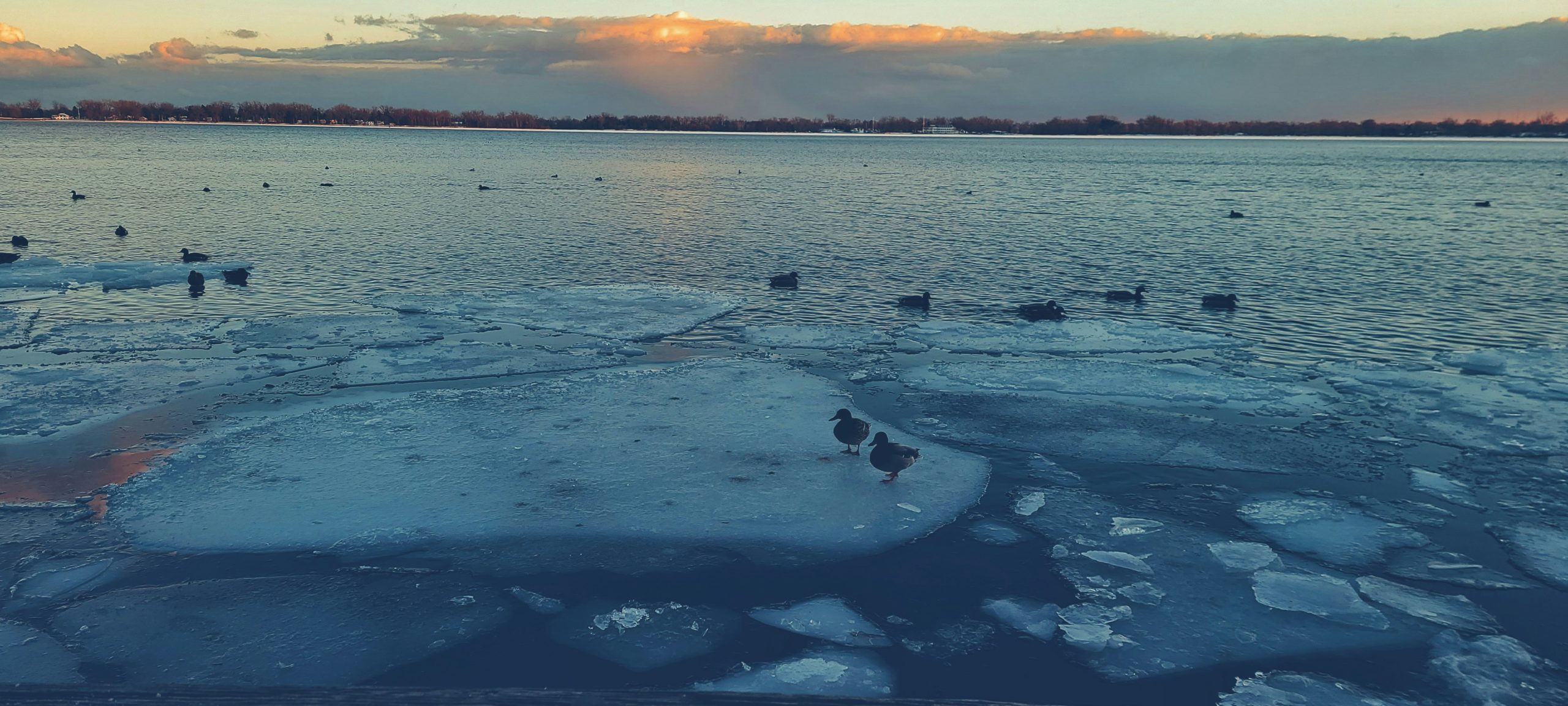Last winter, frail lake ice in Canada claimed the lives of six people. Police attributed these deaths to “unseasonably warm weather and unpredictable ice,” but scientists say warmer winters and temperature fluctuations are a new reality of climate change. This creates an urgent need to relearn how we assess the safety of ice.
According to Josh Culpepper, a postdoctoral researcher in the department of biology at York, a comprehensive assessment of ice quality has been missing from the scope of research until now.
Scientists divide ice into two types: white ice and black ice. Black ice is rigid and can withstand more weight than white ice, with the latter usually made of slush and containing air holes, thus significantly decreasing its load-bearing capacity.
Research on lake ice, led by Professor Sapna Sharma in York Department of biology, shows that “the thickness” of the black ice layer “is declining” across the Northern hemisphere.
Meanwhile, the white ice layer stays the same, becoming the dominant component in the ice make-up. This means that while ice thickness may remain the same, it is no longer as stable.
In her study, Sharma warns that because of this, the “risk of winter drowning may increase until lakes become completely ice-free.
“Winter weather and climate are currently undergoing rapid changes whereas human perceptions and behaviours are not,” she concludes in her study.
Culpepper stresses the danger especially applies to people familiar with the local waters. “If you’re anticipating, ‘Oh, you know, I’ve lived in this area all my life. I know what this lake does, I know what this pond does,’ that’s not going to be true anymore,” he cautions.
One factor that contributes to drownings is the rigidity of laws. “What you see is that countries that have more stringent laws about going out on the ice tend to have fewer drownings,” says Culpepper.
In Canada, the responsibility to warn the public about dangerous ice conditions falls on the shoulders of the local municipalities.
Jennifer Korosi, an associate professor in York’s Faculty of Environmental and Urban Change, says her research group has largely relied on Facebook community groups and snowmobile associations to monitor the ice conditions in the area.
“From a liability perspective, it’s very difficult for somebody to say ‘you can safely go on the ice now,’ especially for big lakes where it can be safe in one spot and then you can get a lead or pressure ridge in another spot,” Korosi says.
The Canadian Red Cross and the Lifesaving Society have provided extensive guidelines of safe ice thickness required for different activities, such as walking, skating, or snowmobiling. However, the latest guidelines available online are dated 2019.
Culpepper explains that given the rapid impacts of climate change, safety guidelines should be updated every year and draw conclusions from the local weather patterns.
He and his research team have been leading the effort to compose a database of ice quality measurements across the Northern Hemisphere, which would be open to the public.
The crisis of thinning ice is not only a matter of safety, but a question of survival for many Indigenous communities who rely on the ice for transportation. The shortening of the operational period of ice roads creates a devastating economic impact on remote communities who rely on goods brought in by trucks.
Culpepper explains that if the ice covers become too thin to support transporting vehicles, ships and airplanes would need to be engaged, which will increase the cost of goods.
Korosi, who spent a lot of time working in Fort Simpson and Northwest Territories, adds that “these are communities that already have food security issues.
“There are really important eco-justice concerns around this, and being smaller communities, they are also probably less visible to the rest of Canada,” she says.
“This isn’t a problem that’s going to go away anytime soon,” concludes Korosi. “It’s one that’s going to get worse. We need to look to those communities that are most vulnerable and think about what we can do to support them.”


